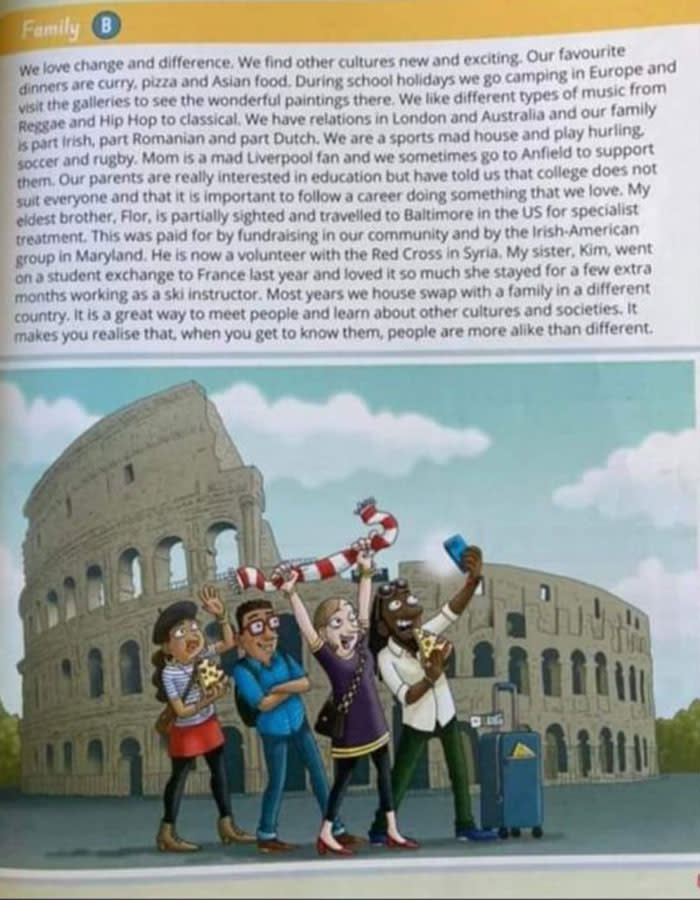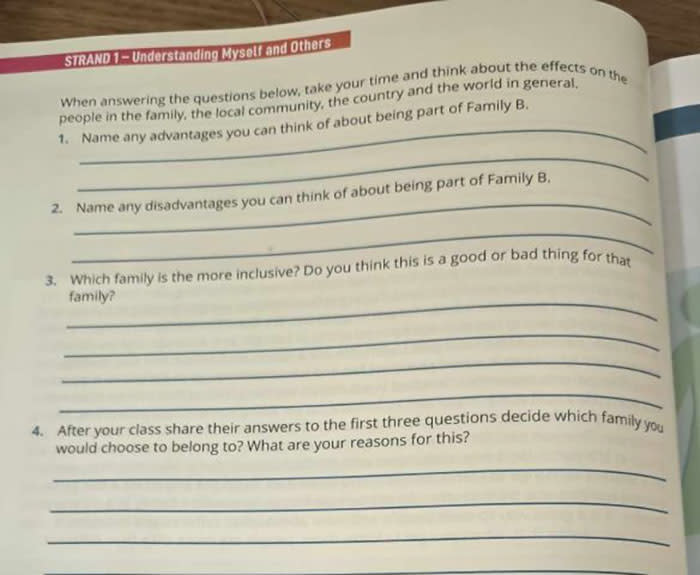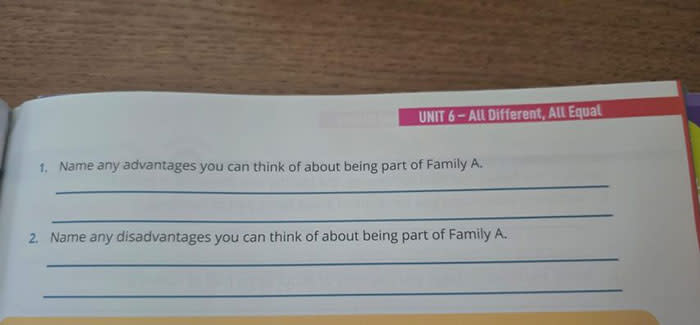“Woke” Textbook’s “Vile” Portrayal Of A Typical Irish Family Sparks Outrage
“They want us to hate ourselves,” wrote Lawyers of Ireland, a Facebook group, as part of the backlash sparked by the release of a children’s book by that country’s National Council for Curriculum and Assessment (NCCA).
The book depicts two types of families who hold stereotypically depicted “traditional” and “progressive” values, and it vilifies the first for being “too Irish” while lauding the second for being open to change and difference.
“It’s so wildly clichéd and asinine as to almost be beyond offensive,” writes Niamh Uí Bhriain for Gript. “In fact, many people sharing it online yesterday thought it was a parody.”
One enraged parent brought the book to the attention of Carol Nolan, a member of the Irish Parliament, who upon reading it, said:
“How this trash and drivel ever made its way into a curriculum text book is almost beyond me. There is a level of contemptuous loathing and underlying aggression to it that is simply jaw-dropping,” the congresswoman stated.
A “xenophobic” portrayal of a rural Irish family in a children’s schoolbook sparked outrage, with one congresswoman asking for its removal from classrooms

Image credits: Gript
The traditional family, labeled “A,” is shown as rural and loving their Irish roots, shown posing in front of their farm and animals. However, those characteristics are depicted with a critical lens.
From food to music, pastimes, and sports, every aspect of their existence is shown as regressive. The parents in family “A” forbid their children from engaging in any activity of foreign origin, so if they want to play guitar, they force them to play Irish instruments; if they want to play an overseas sport, they will be pushed towards Gaelic football.

Image credits: Gript
Critics believe the description is purposely exaggerated to make kids who come from a strong Irish cultural background feel lessened and ashamed of their origins.
“You are [being described as] narrow-minded, gastronomically illiterate, hicks,” wrote Bhriain, explaining that the language used in the text is deliberately chosen to belittle the rural family and would not be acceptable if it was instead directed at another culture.
“Imagine, if you will, what the reaction would be if this was written about an Indian family. ‘They eat curry every day. They only like other Indians. They won’t let us talk to Catholics. They only let us watch Bollywood. We can only play the sitar.’ There’d be an immediate uproar,” she states.
Critics criticized the stereotypical portrayals of each family, which they believe was done in an effort to make children who come from traditional backgrounds ashamed of their heritage

Image credits: Gript
The progressive family, labeled “B,” is depicted as culturally diverse, with a white-skinned mother and a dark-skinned father taking pictures in front of the Roman Colosseum accompanied by their two children.
“We have relations in London and Australia and our family is part Irish, part Romanian and part Dutch,” the family’s description reads.
Their existence is shown as the “correct” way to be. The parents are open-minded, allowing their kids to pursue whatever path they choose in life. They are also volunteers and fundraisers for charitable causes.

Image credits: Gript
While those characteristics are positive, it’s the sharp contrast between the two depicted groups that critics believe is disingenuous.
“Obviously Family A don’t really fully exist, because there almost isn’t a person in Ireland who doesn’t have relatives abroad, or who doesn’t eat pizza, or who wouldn’t enjoy seeing a bit of the world,” Bhriain explains.
Critics also point to the lack of nuance when describing certain life choices. The idea of a family working on a business together for generations is vilified. On the other hand, members of family “B” each work separately from each other in unrelated fields, which is shown as a virtue.
Independent congresswoman Carol Nolan believes the book is attempting to undermine the cultural identity of Irish children, stepping over how parents choose to nurture their kids

Image credits: Griffin Wooldridge
“It should be removed from every classroom,” she stated. “It’s a cheap and sneering effort.”
Nolan has been at the forefront of discussion around immigration and border control, and she believes that the European Union is purposely trying “simply to transpose EU laws while giving the process a veneer of democratic legitimacy.”
Bhriain also adds that the book’s message is not about respecting other cultures but more about painting them as superior to their own.
“They are trying to beat that into your kids, not with a strap, but by an assault on their identity, their family life, and their sense of pride,” she explained.
Photos of the material show a slew of questions, and kids are asked to which family they would like to belong, what are the advantages and disadvantages of each, and which one is more inclusive.
“It’s a good and healthy thing now apparently to ask the whole class to critique someone’s family.”
Irish netizens were almost universally appalled by the depiction of the traditional family in the children’s book

Image credits: gdtography
Some recognized the importance of curtailing racism, but they believed the approach taken by the material to be counterproductive.
“I totally understand why education is needed to ward off racism, quash ignorance and promote inclusion. Does this reek of perpetuating a negative Irish stereotype or am I just getting defensive?” asked one user on Reddit.
“As someone who specializes in editing for bias in children’s books, this is horrendous and not okay at all,” replied another, stating that they would contact people in their network to write to the publisher about the book.
“I’m proud to come from a Family A. I had hard working parents who brought us up to be decent people. I know who I am and where I come from. No one will tell me to be ashamed of my upbringing,” wrote one user on Facebook.
“The indirect brainwashing is unreal, the corruption is just on another level and we are helpless against the elite, they are changing Ireland whether the people agree or not,” said another Irish citizen.
“I wouldn’t like to be part of either family. They read like the ridiculous parodies that they are,” stated one commenter.
“This is not just a racist but xenophobic, caricature of a traditional Irish family,” one commented.
“Shocking” Netizens were left in disbelief by the portrayal of the rural family in the children’s book










The post “Woke” Textbook’s “Vile” Portrayal Of A Typical Irish Family Sparks Outrage first appeared on Bored Panda.
